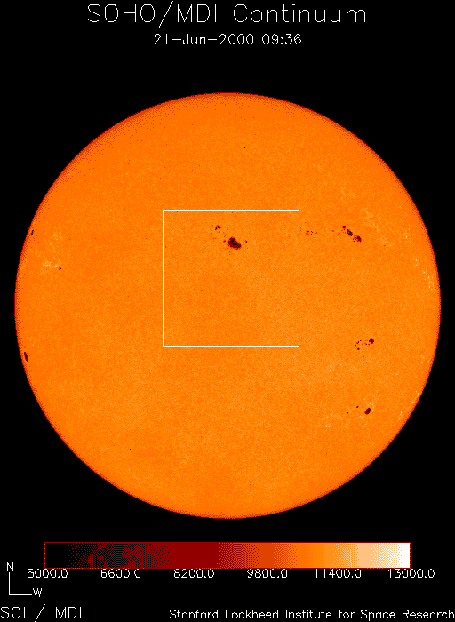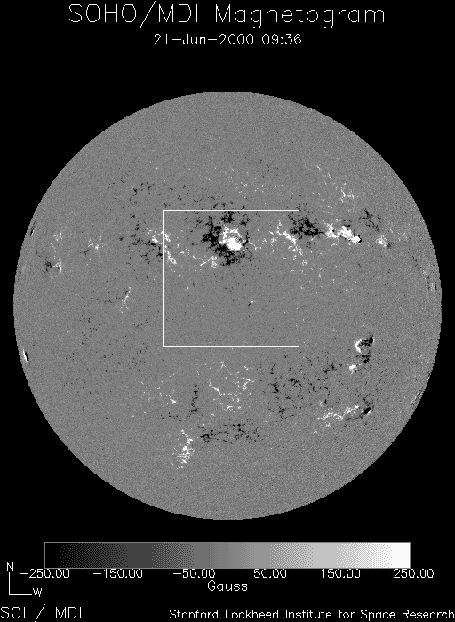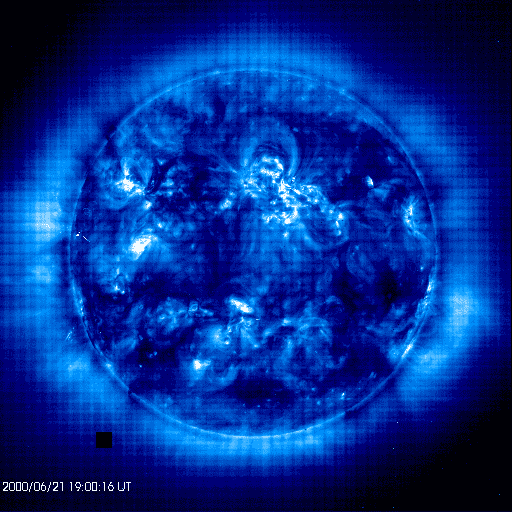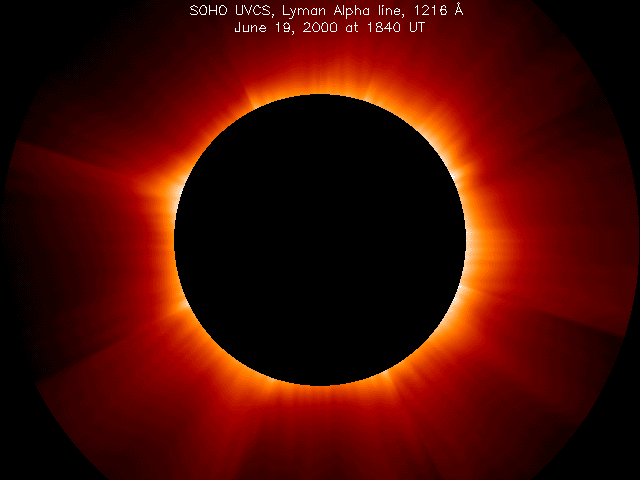

There is a solar satellite that is orbiting the Sun between the Earth and the Sun (about 1.5 million km closer to the Sun, at a point where the Sun's pull and the Earth's pull are balanced - thus it always sees the same face of the Sun that we do). This satellite has instruments that can look at the sun in different wavelengths (different "colors" of the visible spectrum). It can look at the body of the Sun, or the corona around the Sun (by blocking the radiation coming from the body). These images give a fascinating views of the Sun! (The images are "false-colored" - most of the wavelengths studied are outside the visible spectrum, so they give it a blue colorscale or a green colorscale to distinguish between the wavelengths. [An example of of this "false color" imaging is the movie "Predator" with Arnold Schwartzeneger - or some of the recent shampoo comercials.])
The sunspots are caused by intense magnetic fields interacting with the surface of the Sun. The Sun has magnetic field lines like the Earth, except that the Sun has a much more volatile core .. it rotates at different rates, so the magentic field lines get twisted and bunched up. This is like a rubberband when you twist one end but leave the other fixed (such as for a rubberband-powered plane). In the areas where the intense magnetic field twists occur, the surface temperature is roughly a thousand degrees cooler than the area around it (but it is still about 6000 degrees C!). That "relatively cool" area shows up darker. Sunspots can be seen with a filtered telescope or via a projected method with a telescope (don't look directly at the sun with a telescope without a filter!!! (I once saw sunspots in the magnified image of the Sun rising on an episode of "Angel" {as in "Buffy"}!!)
Look at the two images below .. the one on the left is what the filtered Sun would look like (we are in a period of relatively active sunspots for the next year). The image on the right is the magnetic field strengths of the same Sun (i.e. the same time). Notice the very close connection between the white areas on the right (high magnetic fields) and the sunspots on the left!


Here are some views in the different wavelenghts (outside the visible spectrum of 4000-8000 angstroms). [Hint, try cycling back and forth between two adjacent images .. the times are a little different, so you can see the rotation of the Sun, but also you can see the similar features .. with differences caused by the different wavelength that is being studied.]
 |
By blocking the light from the core, you can see the corona around the Sun. If the Sun kicks material off the surface of the sun, it is called a "mass ejection". When those charged particles hit the Earth's magnetic field, they can cause "auroras", otherwise known as "northern lights".
